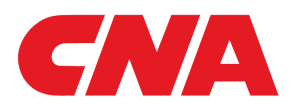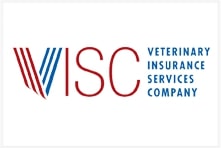By Adam DeCarolis, PharmD Life Science Risk Control Consulting Director; John Mizurak, RRE, CRIS, Small Business Risk Control Consulting Director; Bret Martin, PE, CSP, CFPS, CHFM, CHE, CLSS-HC, Assistant Vice President, Property Risk Control, CNA Insurance
This article was originally printed in the May/June 2024 issue of the California Veterinarian magazine.

Water can destroy medical equipment, computer/phone systems, records, and supplies, and may cause significant damage to the walls and floors of your clinic. According to CNA Insurance claims data for veterinary clinics from 2017 to 2022, 21% of all claims have been related to water damage.
Many policyholders feel hesitant to file an insurance claim because they believe their premiums for coverage may increase. Some business owners would rather pay the claim themselves, but there are many questions to consider. Do you have that money readily available, or would you have to wait a few weeks to build up the cash reserves to pay? What are you going to do to make up for the loss of income because of the claim? What proportion of the operation’s output was impacted? What if seemingly innocuous water damage is more serious than you thought and leads to latent damage? All these variables and more must be carefully considered before you make this all-important business decision.
Actions to consider when filing a claim:
- File your claim so your carrier can complete your damage assessment as soon as possible.
b. Protect the property to prevent further damage.
c. Document the damage and provide complete and accurate information to the adjuster.
d. Secure accurate repair and replacement estimates from a reputable contractor, and be sure to verify the contractor’s insurance.
e. Expediting repairs will enable you to resume operations in a timely manner.
Once you have all the facts and figures, filing a claim with your carrier and having the adjuster determine the cost of the claim and the possibility of latent damage (e.g., mold damage) will give you a better idea of how to proceed with getting your damages repaired and your business back up and running.
A solution for preventing, mitigating, and responding to water-related events involves leveraging internet-enabled sensing devices, commonly known as Internet of Things (IoT) devices. These devices possess the capability to detect causes of potential water claims such as freezing, leaks, flow irregularities as well as high/low temperatures, humidity, and power interruption. Upon detecting any irregularity, these devices send alerts to your phone or email, enabling you to respond promptly. Furthermore, some devices are equipped to take automated actions on your behalf. Early action usually reduces the size of a potential claim. They also can monitor refrigerator and freezer temperatures for medication storage. For more information about CNA’s allied vendor, please visit https://www.alertlabs.com/pages/cna or the Alert Labs FAQ.
Additionally, it is important to consider the potential impact of a water release in your clinic and develop continuity plans in advance. Identify critical equipment (e.g., servers, computers, and X-ray equipment) that may be impacted and understand the time and cost to repair/replace water-damaged items. This will enable you to develop equipment recovery plans with the information needed (e.g., vendor/contractor information, cost, and lead time estimates) to quickly restart your clinic’s operations.
CNA offers risk control solutions that can help businesses manage property-related exposures and minimize business interruptions. CNA’s dedicated website for Water Damage Mitigation (https://www.cna.com/web/guest/ cna/risk-control/prepwise/water-damage) includes reference documents for Water Damage Preparation, Water Damage Incident Response, and Water Damage Technology Solutions. There are also resources for Business Resiliency Planning, Winter Weather Preparation, and Hurricane Preparation, all of which can help prepare your veterinary clinic for water damage events.
The information, examples and suggestions presented in this material have been developed from sources believed to be reliable, but they should not be construed as legal or other professional advice. CNA accepts no responsibility for the accuracy or completeness of this material and recommends the consultation with competent legal counsel and/or other professional advisors before applying this material in any particular factual situations. This material is for illustrative purposes and is not intended to constitute a contract. Please remember that only the relevant insurance policy can provide the actual terms, coverages, amounts, conditions and exclusions for an insured. All products and services may not be available in all states and may be subject to change without notice. “CNA” is a registered trademark of CNA Financial Corporation. Certain CNA Financial Corporation subsidiaries use the “CNA” trademark in connection with insurance underwriting and claims activities. Copyright © 2024 CNA. All rights reserved.











